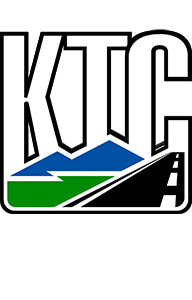Search for articles or browse our knowledge portal by topic.
Microsurfacing


Microsurfacing is a high performance enhanced slurry seal composed of a mixture of polymer modified emulsified asphalt, dense-graded crushed fine aggregate, mineral filler, break control additives and water. The emulsifiers and additives allow microsurfacing to be placed at thicknesses up to 1.5 inches and the surface to cure in less than an hour.
Microsurfacing requires a special machine with an attached spreader box that has a double strike-off blade design. The microsurfacing unit is truck-mounted or self-propelled. A special rut box is used to fill ruts > 0.5 inches deep.
The two types of microsurfacing are classified based on maximum aggregate size:
- Type II microsurfacing employs . It is used to fill surface voids, address surface distresses, seal, and provide a durable wearing surface for airports and city streets.
- Type III microsurfacing uses a larger average aggregate size, provides maximum skid resistance and an improved wearing surface, and is used for heavily traveled highways, collectors, and interstates as well as rut filling. It can also be used on highly textured surfaces requiring larger size aggregate to fill voids.
Use microsurfacing on flexible or rigid pavements in good structural condition with low- to medium-severity surface distresses (e.g., cracking, raveling). Cracks > 0.25 inches should be sealed prior to microsurfacing. Microsurfacing is effective on very high-volume roadways where the resumption of traffic needs to happen quickly. It has been used successfully in many settings, including airports, parking lots, residential streets, city streets, and interstates.
- High-quality materials, strict specifications, and performance-based design procedures yield a high-performance surface that corrects minor surface profile irregularities and fills ruts.
- Cures quickly and lasts longer than some other surface treatments (e.g. slurry seals)
- Can be constructed at night (or during cooler temperatures).
- Protects pavement structures from moisture and the surface from further deterioration.
- A cost-effective alternative to hot mix asphalt overlays for preserving concrete or asphalt pavements.
Pavement Preservation Knowledge Book:
Access the complete Knowledge Book here: Pavement Preservation Knowledge Book
Next Article: 3.7 Cape Seal
Previous Article: 3.5 Thinlay

